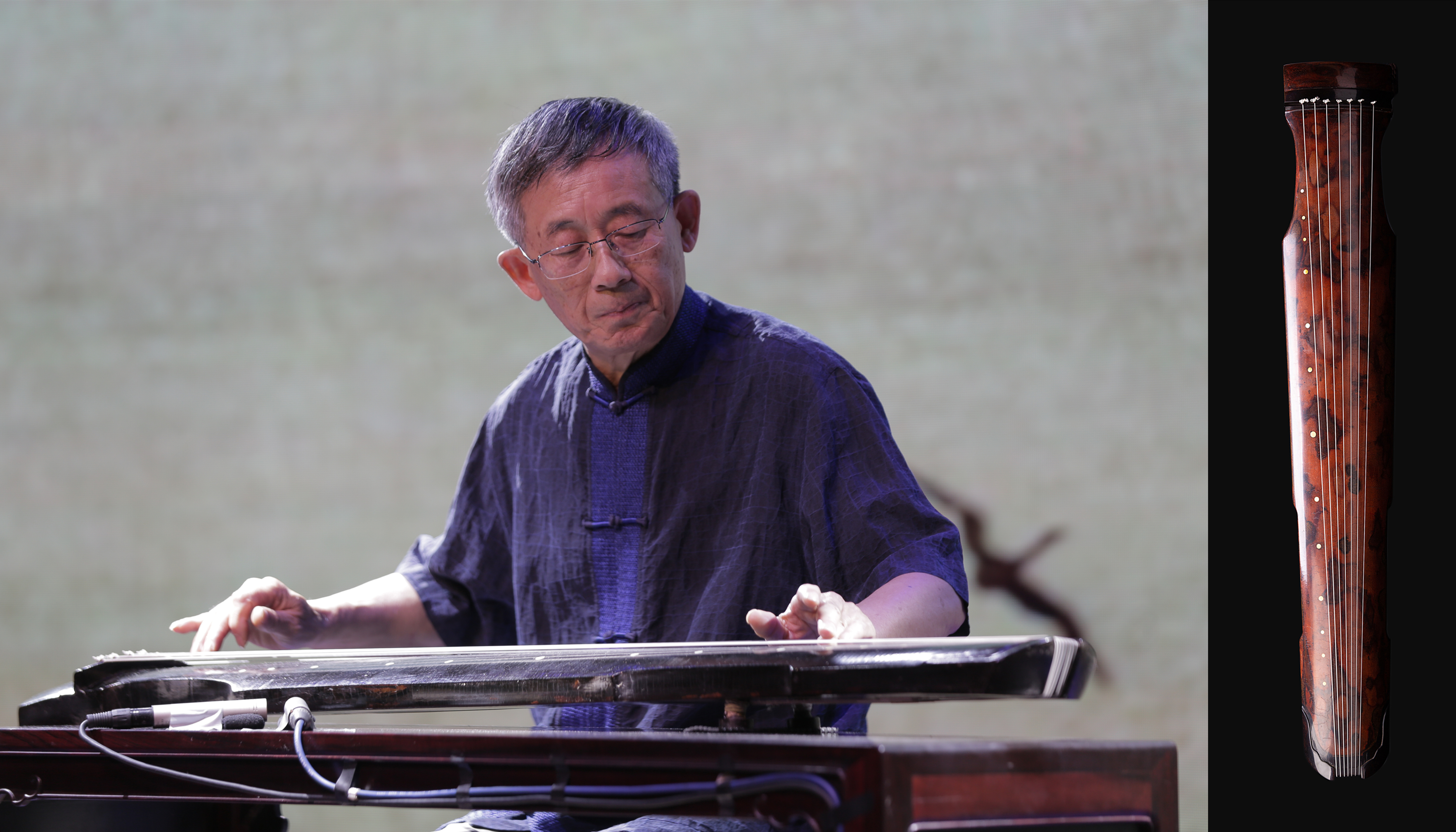In the river of long history of China, Guqin has always been important as a carrier of Chinese traditional culture, together with Chinese painting, calligraphy, poetry, and literature. Guqin is one of the most representative Chinese solo instruments. The purpose of playing Guqin is not only for music, but also for self-entertainment, self-admiration, meditation, personal cultivation, and emotional exchanges with close friends.
 According to early literary works and archaeological discoveries, Guqin has a history of more than 3,000 years in China. The performance of Guqin is a symbol of elegance and status, making it an elite art of nobility and literati, rather than a performing art for the masses. As a matter of fact, Guqin has an inseparable relationship with the history of Chinese literati, because it is one of the necessary qualities of Chinese literati, called “Qin, Chess, Calligraphy, and Painting”, and it ranks first. Guqin Art has sophisticated and exquisite performance technique, a unique notation, and many elegant and beautiful tunes. In addition, quite a lot of music scores were passed down orally.
According to early literary works and archaeological discoveries, Guqin has a history of more than 3,000 years in China. The performance of Guqin is a symbol of elegance and status, making it an elite art of nobility and literati, rather than a performing art for the masses. As a matter of fact, Guqin has an inseparable relationship with the history of Chinese literati, because it is one of the necessary qualities of Chinese literati, called “Qin, Chess, Calligraphy, and Painting”, and it ranks first. Guqin Art has sophisticated and exquisite performance technique, a unique notation, and many elegant and beautiful tunes. In addition, quite a lot of music scores were passed down orally. Guqin has seven strings and thirteen cords, allowing the player to play four octaves by ten different ways of plucking. There are three basic skills to play Guqin: “San”, “An” and “Fan”. “San” refers to open string, featured by its strong and vigorous sound, usually used for the skeleton of tunes; “Fan” refers to touching the cord lightly with the left hand to emit light and floating music (overtones), commonly used for Cadenza; “An” means pressing the string with the left hand while moving the pressing finger to adjust for different pitch. The same pitch can be played on different strings and different cords with different methods, and the tone is full of changes.
Guqin has seven strings and thirteen cords, allowing the player to play four octaves by ten different ways of plucking. There are three basic skills to play Guqin: “San”, “An” and “Fan”. “San” refers to open string, featured by its strong and vigorous sound, usually used for the skeleton of tunes; “Fan” refers to touching the cord lightly with the left hand to emit light and floating music (overtones), commonly used for Cadenza; “An” means pressing the string with the left hand while moving the pressing finger to adjust for different pitch. The same pitch can be played on different strings and different cords with different methods, and the tone is full of changes.
